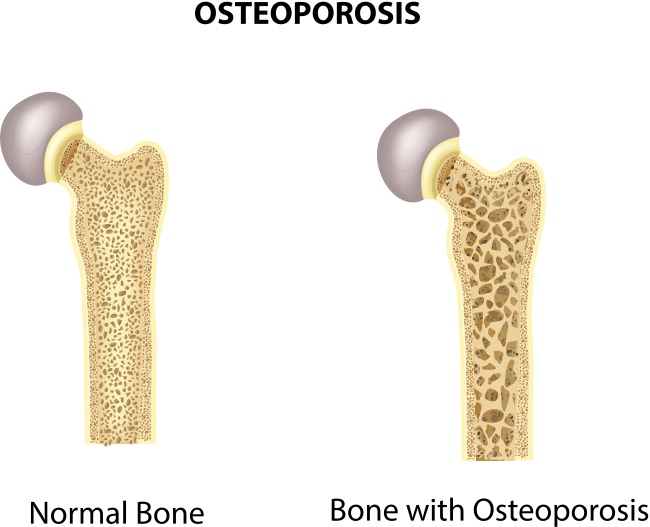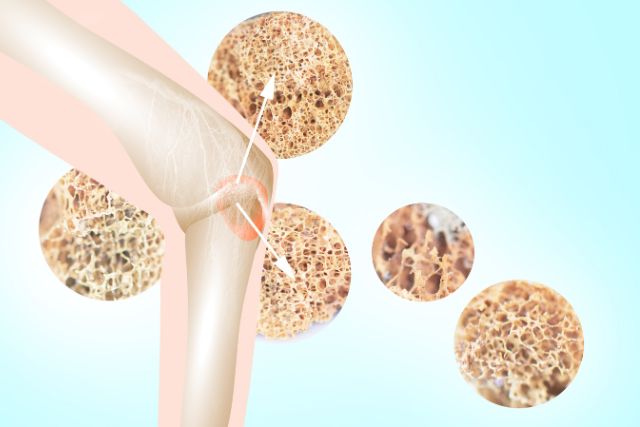
Screening for Osteoporosis ICD 10: Millions of people worldwide suffer from osteoporosis, a disorder that causes weaker bones and an increased risk of fractures. Early identification is critical for controlling and reducing its consequences. Understanding ICD 10 coding for osteoporosis screening will help to speed up the procedure, guaranteeing accurate diagnosis and treatment.
Understanding Osteoporosis
- Definition of Osteoporosis: Osteoporosis is a condition that makes bones weak. This occurs when bone density declines, increasing the risk of fractures. It frequently advances quietly and is only diagnosed after a fracture has occurred.
- Causes and Risk Factors: Age, gender (women can develop osteoporosis), family history, low body weight, and certain medical conditions or drugs all play a role in its development. Smoking, heavy alcohol intake, and a calcium and vitamin-D-deficient diet are all important lifestyle decisions.
- Symptoms and Complications: Osteoporosis, sometimes known as the “silent disease,” usually does not cause symptoms until a fracture. Common problems include hip, spine, and wrist fractures, which cause persistent pain, disability, and a worse quality of life.
Types of Osteoporosis Screening Tests
1) Dual-energy X-ray Absorptiometry (DEXA or DXA) Scan
- Description: The most popular and well-recognized method of determining bone mineral density (BMD).
- Procedure: Low-dose X-rays are used to evaluate bone density, which is commonly done at the hip and spine.
- Advantages: High accuracy, little radiation dose, and the ability to forecast fracture risk.
2) Quantitative Ultrasound (QUS)
- Description: Sound waves are used to evaluate bone density, which is often done at the heel (calcaneus).
- Procedure: A device transmits sound waves into the bone, and the rate at which they travel is utilized to calculate bone density.
- Advantages: No radiation exposure, portable, and less expensive than DEXA.
3) Quantitative Computed Tomography (QCT)
- Description: A specialized CT scan that produces 3D images to determine bone density.
- Procedure: Uses X-rays to provide exact cross-sectional pictures of bones, frequently the spine.
- Advantages: Can discriminate between cortical and trabecular bone, which is beneficial for individuals with disorders that make DEXA less reliable.
4) Peripheral Dual-Energy X-ray Absorptiometry (DEXA)
- Description: A form of DEXA scan that assesses bone density in the outer regions such as the wrist, forearm, and heel.
- Procedure: Similar to central DEXA, but focused on smaller, more accessible bone regions.
- Advantages: Portable, low-cost, and suitable for first screenings.
5) Trabecular Bone Score (TBS)
- Description: An indirect measure of the microarchitecture of bones based on DEXA images.
- Procedure: Analyses the texture of DEXA scan pictures to determine bone quality.

Introduction to ICD 10
The International Classification of Diseases, Tenth Revision (ICD 10) is a classification system healthcare practitioners use to categorize and label diagnoses, symptoms, and procedures. It establishes a uniform language for proper record-keeping and billing.
- Role of ICD 10 in Healthcare: ICD 10 codes are critical for billing and insurance purposes, ensuring that healthcare practitioners are compensated for their services. They also contribute significantly to research and health statistics.
- Structure of ICD 10 Codes: ICD 10 codes are composed of letters and numbers. The structure usually begins with a letter, followed by digits that offer more detailed information on the disease or process. For example, M81.0 represents age-related osteoporosis without a recent clinical fracture.
Screening Guidelines and Recommendations
- Guidelines by Major Health Organizations: Organizations such as the National Osteoporosis Foundation and the United States Preventive Services Task Force make recommendations for people who must be checked for osteoporosis. These recommendations are based on age, gender, risk factors, and medical history.
- Recommended Screening Ages and Intervals: Screening is advised for women over the age of 65 and males over the age of 70. Those with a higher risk should start screening early. The frequency of screening varies depending on initial results and individual risk factors, but it is usually suggested every two years.
- Special Considerations for High-Risk Groups: High-risk individuals, such as those with a family history of osteoporosis, previous fractures, or certain medical problems, should be screened sooner and probably more frequently.

Billing and Coding for Osteoporosis Screening
- Proper Use of ICD 10 Codes: The correct use of ICD 10 codes, such as Z13.820 for osteoporosis screening, is critical for proper invoicing and insurance claims. This guarantees that healthcare professionals receive payment for their services.
- Common Billing Mistakes: Common errors include entering wrong codes or neglecting to include all required codes, which can result in refused claims. It is critical to remain current with coding requirements and maintain proper documentation.
- Ensuring Reimbursement: To secure reimbursement, healthcare practitioners should utilize the right ICD 10 codes, offer adequate documentation, and immediately follow up on any refused claims.
Case Studies and Real-Life Examples
- Case Study 1: Early Detection Success: A 65-year-old lady had a standard osteoporosis screening and was diagnosed with early-stage osteoporosis. Early management with medication and lifestyle modifications reduced fractures and increased bone density.
- Case Study 2: Managing High-Risk Patients: A 50-year-old man with a family history of osteoporosis and a previous fracture received early screening. Despite his busy life, regular check-ups and a personalized treatment plan helped him manage his disease efficiently.
- Lessons Learned from These Cases: Early detection and treatment are critical in controlling osteoporosis. Individualized treatment programs and regular monitoring may significantly improve patient outcomes and quality of life.
Technological Advances in Screening
- New Screening Technologies: More accurate bone density scanners and portable screening devices have been developed recently. These technologies improve accuracy and accessibility.
- The Role of AI and Machine Learning: Artificial intelligence and machine learning are revolutionizing osteoporosis screening by improving diagnostic accuracy and predicting fracture risk. These technologies help healthcare practitioners make educated judgments.
- Future Trends in Osteoporosis Screening: Future trends include more personalized screening methods, genetic testing, and the use of improved imaging techniques to determine bone health and strength.
Challenges in Osteoporosis Screening
- Common Barriers to Screening: Lack of understanding, dread of the process, and financial considerations are all potential barriers. Addressing these difficulties may increase screening rates and results.
- Addressing Misconceptions: Common misunderstandings include the belief that osteoporosis exclusively affects women and that it cannot be avoided. Educating the public can help dispute these beliefs.
- Strategies to Overcome These Challenges: Public health campaigns, low-cost screening programs, and community outreach are among the strategies used to promote awareness and support screening.
Global Perspectives on Osteoporosis Screening
- Screening Practices Around the World: Screening techniques differ widely, with some nations having comprehensive programs and others lacking the necessary resources. Understanding these differences can help shape global health strategies.
- Comparing Screening Rates and Outcomes: Higher screening rates are frequently associated with better results, such as decreased fracture rates and an improved quality of life for osteoporosis patients.
- Global Initiatives to Improve Screening: Global programs aim to raise awareness, improve access to screening, and give information and resources to healthcare practitioners and patients globally.
Conclusion
Osteoporosis screening is an essential part of maintaining bone health and avoiding fractures. The reliable use of ICD 10 codes provides accurate documentation and payment. Early identification, patient education, and technological breakthroughs are critical for improving results. As we move forward, continuous efforts to promote awareness and enhance screening methods will help people throughout the world.
Read More: Grim and Malaria: Understanding the Grim Reality of Malaria
Frequently Asked Questions
1) What is the ICD-10 code for osteoporosis screening?
Z13.820 is the ICD 10 code for osteoporosis screening.
2) Can Osteoporosis be prevented?
Yes, osteoporosis can frequently be avoided by leading a healthy lifestyle that includes a well-balanced diet high in calcium and vitamin D, regular weight-bearing exercise, quitting smoking and excessive alcohol use, and, whenever necessary, taking medicines.
3) How frequently should someone be checked for osteoporosis?
Screening is normally suggested every two years for people at risk, however, this might vary depending on individual risk factors and initial screening results.
